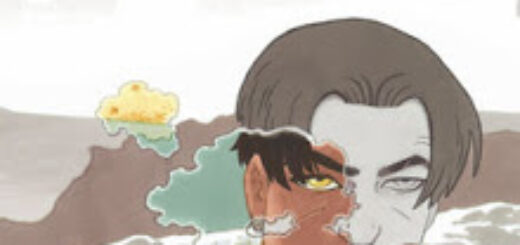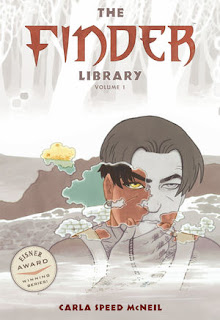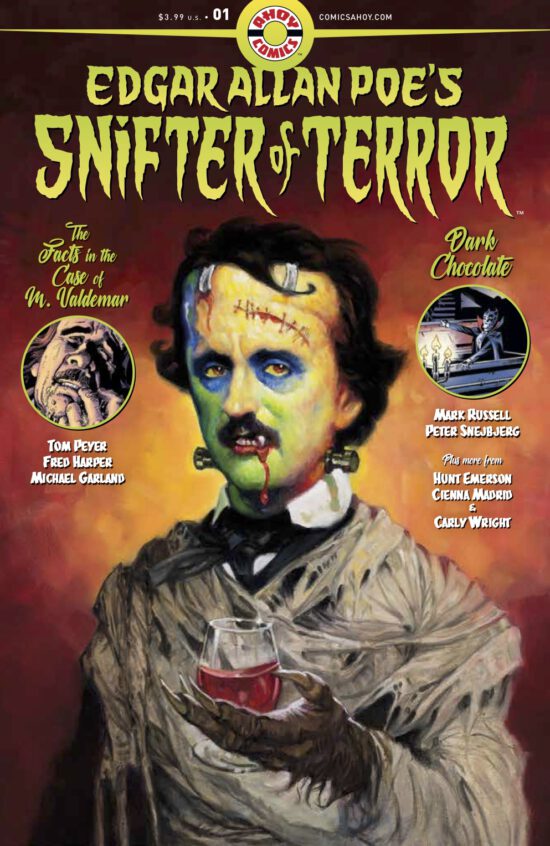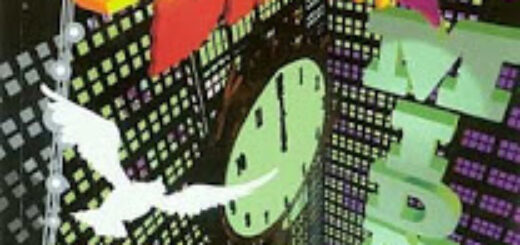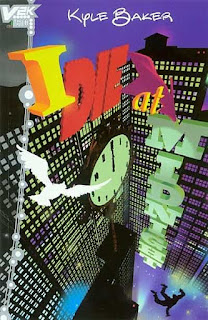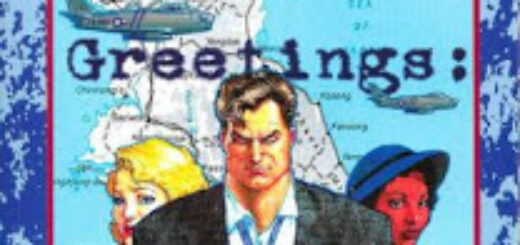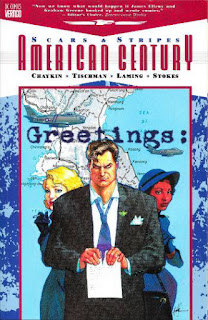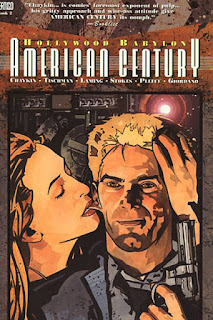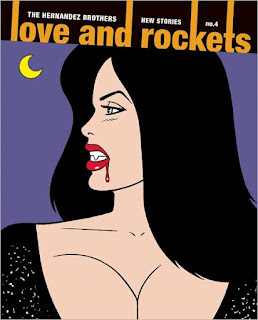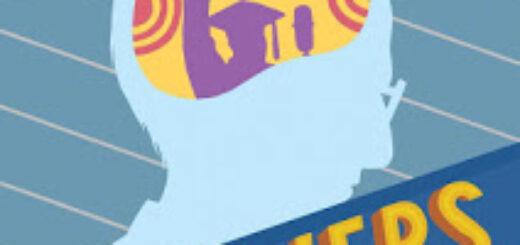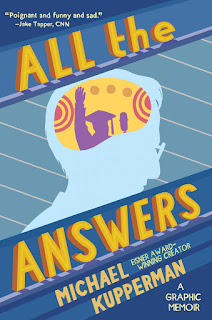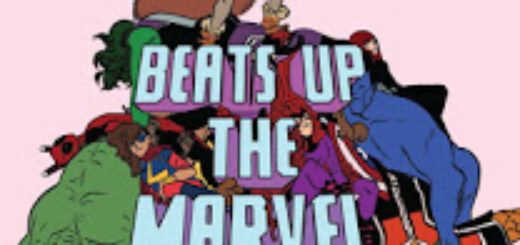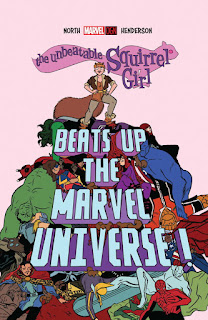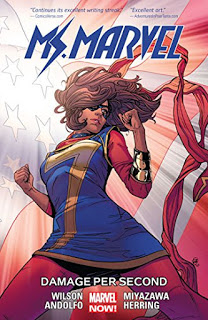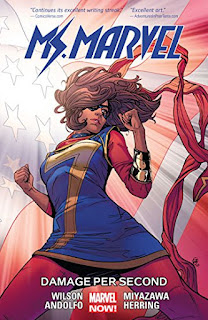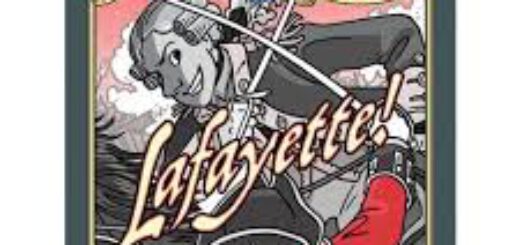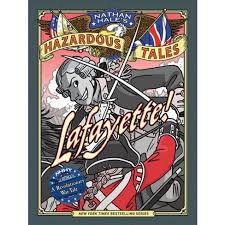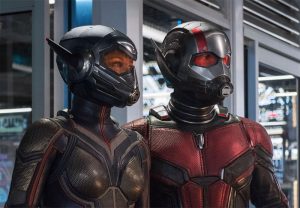Book-A-Day 2018 #304: The Finder Library, Vol. 1 by Carla Speed McNeil
Now, I know that I tend to focus on the negative, even when the positive is much larger and objectively more interesting. I usually blame that on “editor brain” — when you spend years pulling apart stories for a living, it forms a habit that you just can’t break.
So let me say up front that Finder is pretty damn awesome, a smart series of graphic novels with real character depth, a quirky and involving world, tricky plots, and sharp people-oriented art. But it’s got some elements in its SFnal setup that people like me obsess about and complain about more than they deserve.
I’ll try to keep those quibbles minor, since they are minor. This is a great world that basically hangs together; it just has a central flaw that’s very common, very understandable, and yet often very annoying (to people like me who can’t just let it go).
Finder is supposedly set a few thousand years in the future, on an Earth hugely depopulated, devoid of any obvious larger governments than pseudo-zaibatsu “clans,” with people either living crammed into domed cities or roaming the outside wastes as nomads very much modeled on the American Indian in ways that are deeply unlikely. It’s not clear if massive numbers of people left the planet in the meantime, if there was at least one apocalypse to kill billions, or if population just dwindled for a long time. (The current society seems to above replacement rate, and so growing, but maybe only slowly.) And popular culture is, as far as we see, primarily devoted to digging up ephemera of the 20th century.
So, yes, to tick off the obvious SF-geek issues: that feels like much too far in the future for the focus on modern pop-culture; there’s no clear path from here to get to this world; there doesn’t seem to be any infrastructure to feed those people, let alone provide them with industrial goods; and the lack of any structure to society outside/above/between the clans seems unlikely at best — how do clans resolve conflicts, living together in their tight little cities?
Let me stipulate all that: those are issues with the world-building, and maybe creator Carla Speed McNeil tackles them eventually. In the first three storylines of Finder, collected as the 2011 omnibus The Finder Library, Vol. 1 , though, she doesn’t. This book has what was the first 22 issues of Finder the print comic — sometime later it turned into a webcomic — originally published between 1996 and 2001 and then collected into the first four trade paperbacks. (Sin-Eater, the first storyline, took up two books.)
Sin-Eater introduces the world through Jaeger, a roguish “finder” from one of the many tribal “Ascian” cultures that live nomadic lives in the Empty Lands between those domed cities. He has a lot of strangeness of his own, for a 20th century reader, but he’s an outsider in the city of Anvard, so he’s our viewpoint for the strangeness there.
Jaeger is the on-and-off lover of Emma Lockhart Grosvenor, a married woman in Anvard. That is to say: she lets him live with her when he’s in town, but he’s only in town randomly, at long intervals, and utterly without notice. McNeil does not show Jaeger having similar arrangements in other cities — and I think she finds him more appealing than I do — but I see no reason why a man like him wouldn’t have a semi-regular fuck-buddy in all of the places he wanders through.
Emma is part of a mixed marriage that went bad. She’s from the artistic, ultra-feminine Llaverac clan; her husband Brigham Grosvenor is from the military/police clan Medawar. [1] Brigham was a military leader who took his family to the frontier outpost where he was stationed (and where Jaeger was something like a native scout and Brigham’s aide/pet) and there descended into what Finder doesn’t actually call paranoid schizophrenia. Emma got away with her three “daughters” — all members of Llaverac are referred to by feminine pronouns and tend to present as female in public, even if they are biologically male — Rachel, Lynne (who is male), and Marcie (Marcella) with Jaeger’s aid a few years ago, and has been hiding from Brigham since then.
Sin-Eater is the story of how that hiding eventually falls apart, how Brig finds his family again, and how it affects all of them. Jaeger, in what I think is his usual style, is both too clever by half and has a a strong restless tropism to do stupid random things, so it’s all mostly his fault. It’s also the story that introduces the world and explains, as much as McNeil wanted, how it works and what these people do.
The second story here, King of the Cats, is more self-contained and focused more tightly on Jaeger. He’s worked his way to another city as an armed guard on a giant armored bus — the wilderness is quite dangerous, with all of those native tribes and no farmlands — carrying members of the Steinehan clan to an amusement-park city (unnamed, as far as I can find), and wants to get inside mostly because they won’t hire him or let him inside. Jaeger is motivated, as always, but spite and whim as much as anything else.
Camping nearby is a large group of Nyima, an intelligent non-human race with pretty serious sexual dimorphism — the females are lion-headed humanoids and the males a a big question mark. (We learn that most males are semi-intelligence quadrupedal lion-types, but each group has a King, whom all of the females are “married” to, and who has bipedalism and increased intelligence because of a specific intervention by the females. This seems unlikely to be stable or natural, but I can only shrug.) They have an onerous contract with the unseen owners of the amusement park, which they can’t fulfill without destroying their culture and becoming essentially slaves there for the rest of their lives, and which they can’t break without incurring massive financial penalties. (Again: this is a warlike group of nomads in a world with no apparent larger government. McNeil makes the dilemma plausible, but the heavily armed and well-positioned Nyima appear to have a much stronger hand than the weak, unarmed locals.)
Jaeger, in his meddling way, solves the Nyimas’ problem, answers his own curiosity, causes a larger amount of trouble than usual even for him, and leaves at the end, happy and ready for another opportunity to meddle somewhere else.
And last in Volume 1 is Talisman, which I read before a few years back . This is Marcie’s story: she’s growing up from the little girl we saw in Sin-Eater, and I won’t repeat what I said then. (This post is long enough already.) The background details do make more sense if you come to Talisman in series order, though. Talisman is a story about the youth of an artist, which many artists are compelled to tell — McNeil does a good job of it, and her quirky world makes it specific and individual.
The most important thing for me to note at the end here is that I’m going to be actively seeking out Finder Library, Vol. 2. Some of the world-building might annoy me, but that always happens. McNeil’s people are real and have complicated flaws, her world is big and intricate and clearly is full of details she already knows that might never make it into a story, and her drawing is crisp and evocative and sophisticated. It’s good, real SF in comics form, which is rare, and it’s SF focused on people (often women) in a complex world, which is even rarer.
[1] How can there be a clan that specializes in “police” if there’s no government above them? They’d just be the street gang that runs the town, from their monopoly on violence. I’m hoping McNeil eventually explains the governance of this world, because so far I see nothing to keep one clan from eliminating another, or any mechanisms other than violence to solve inter-clan disputes.
![]()
![]()
Reposted from The Antick Musings of G.B.H. Hornswoggler, Gent.

